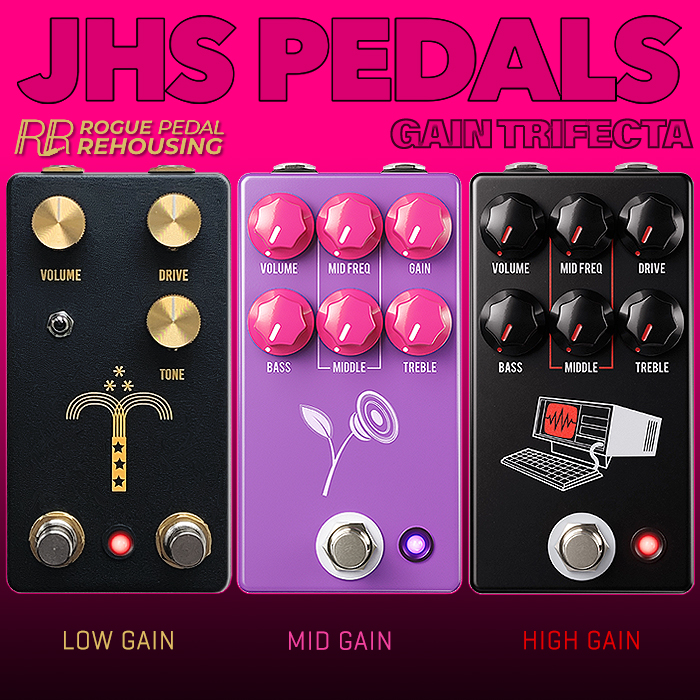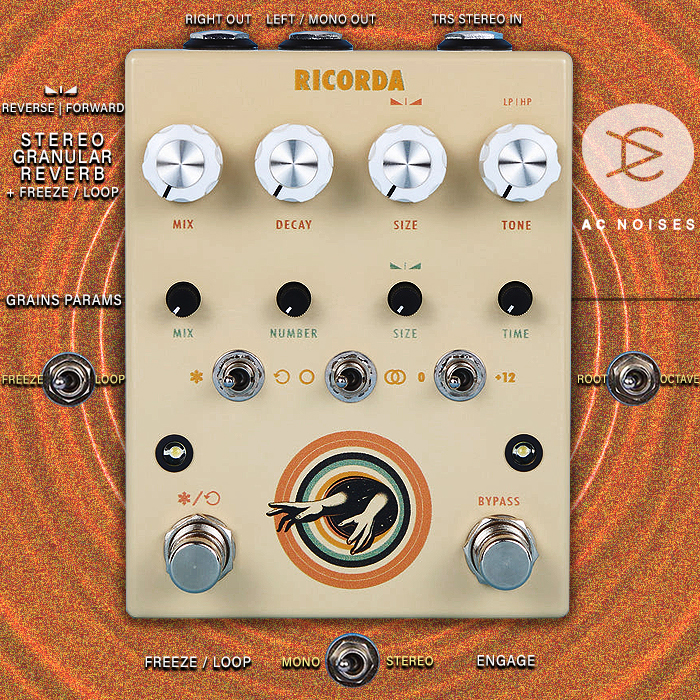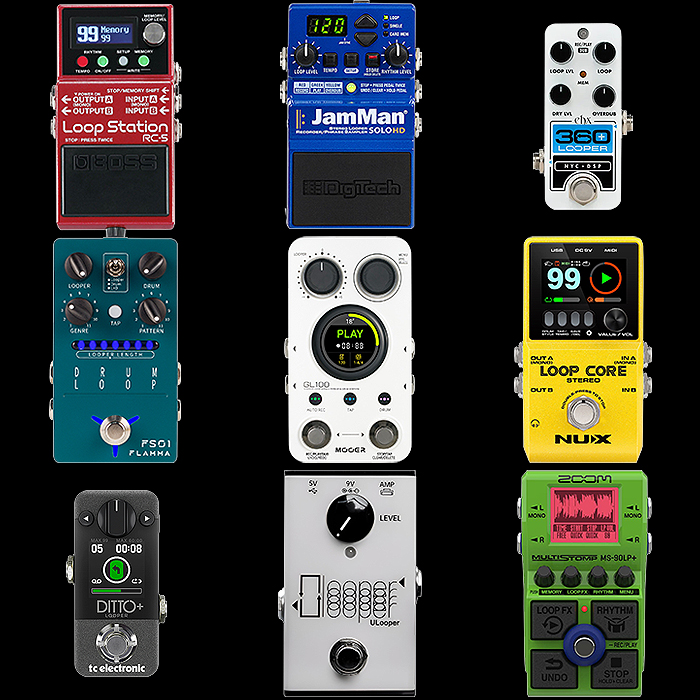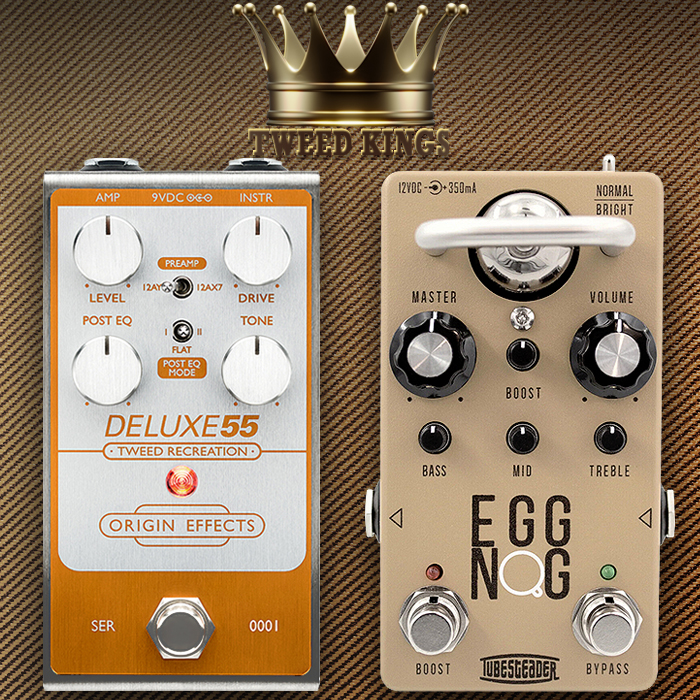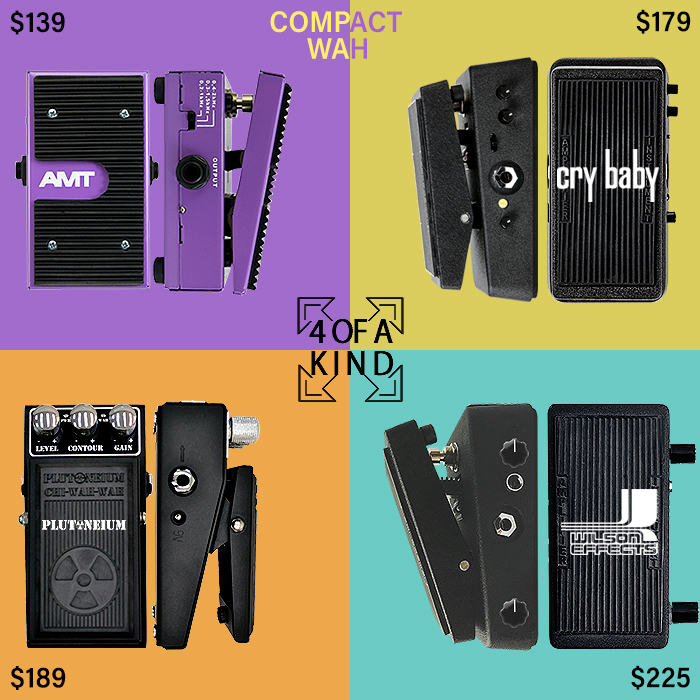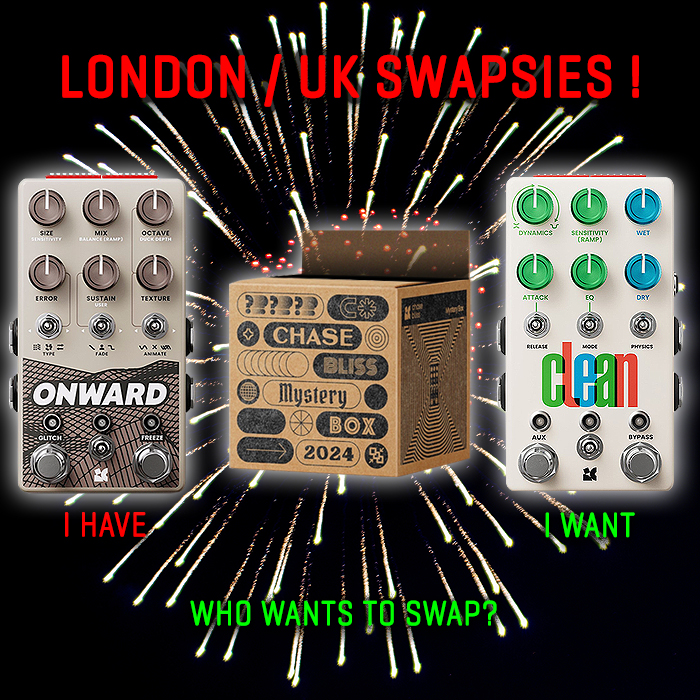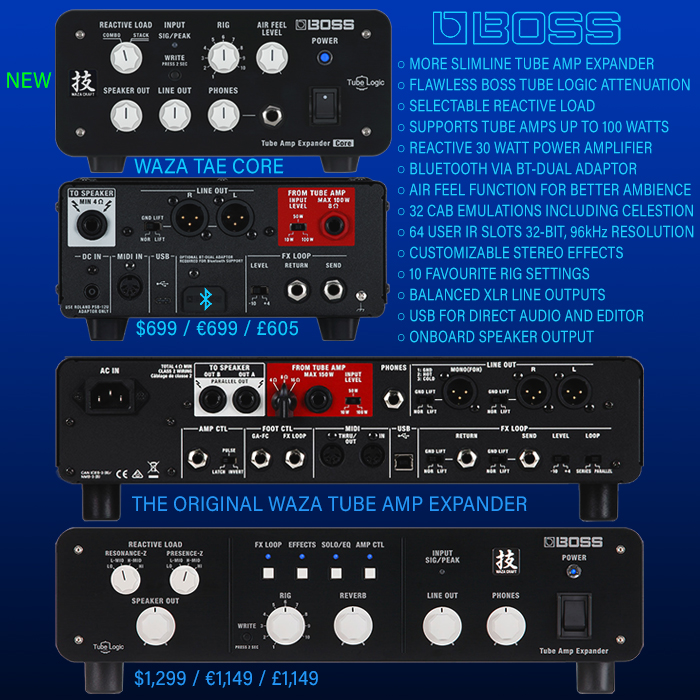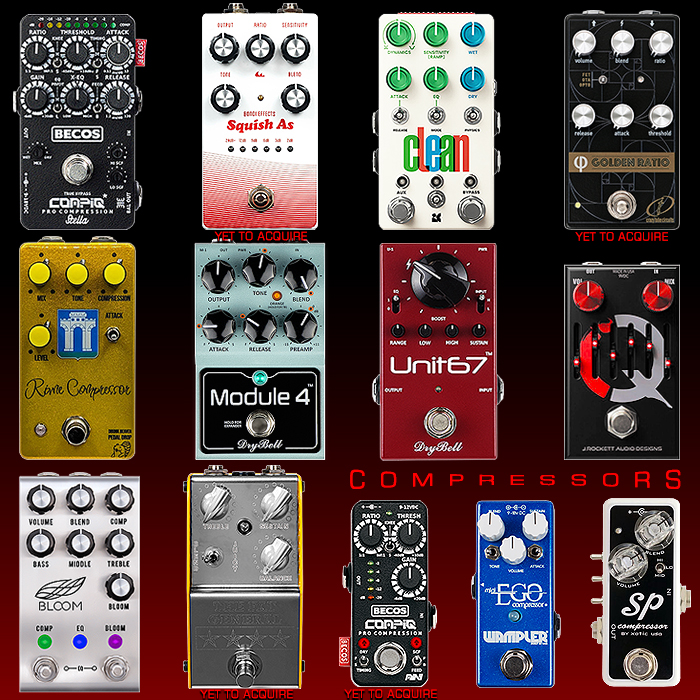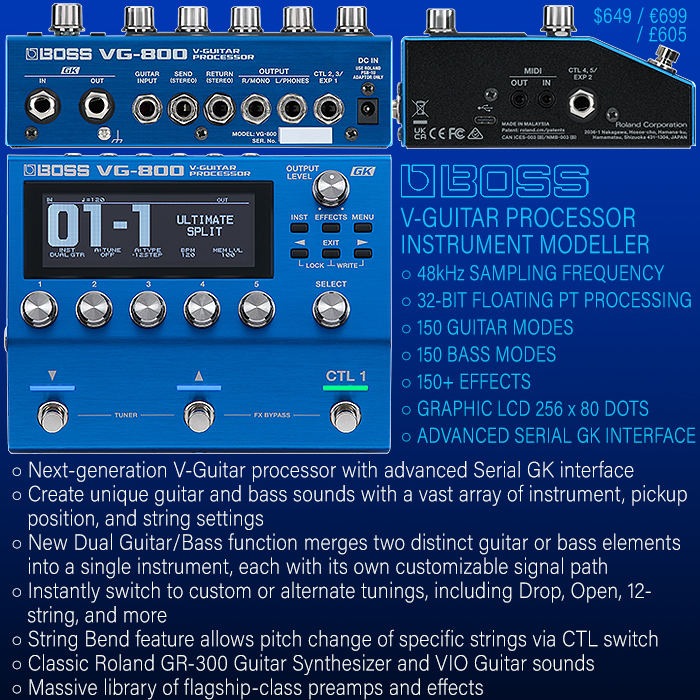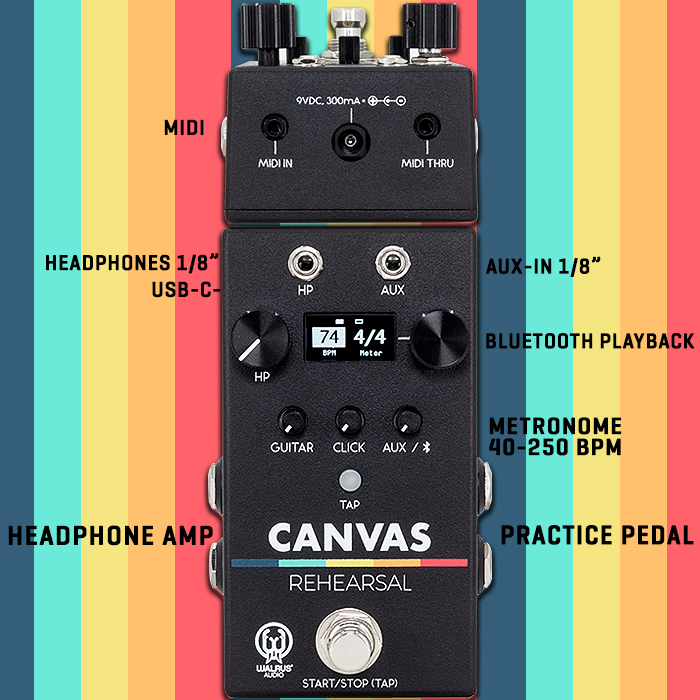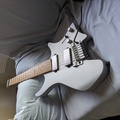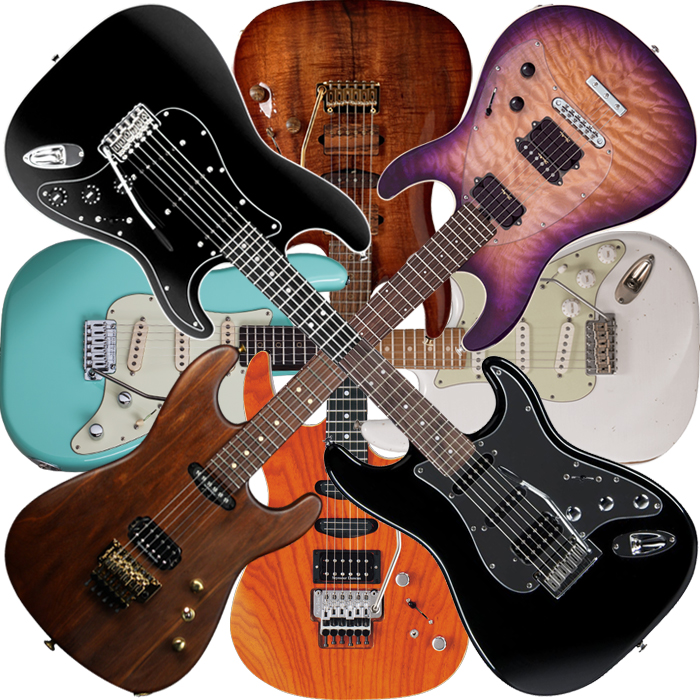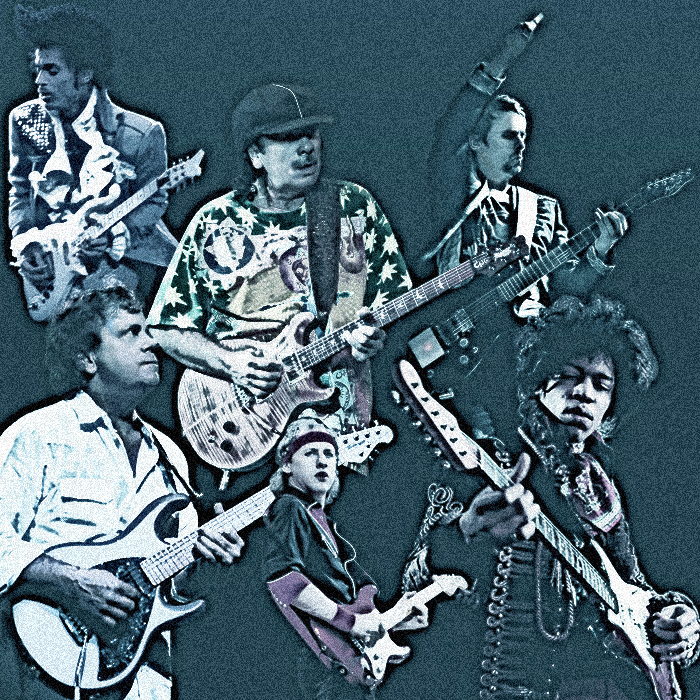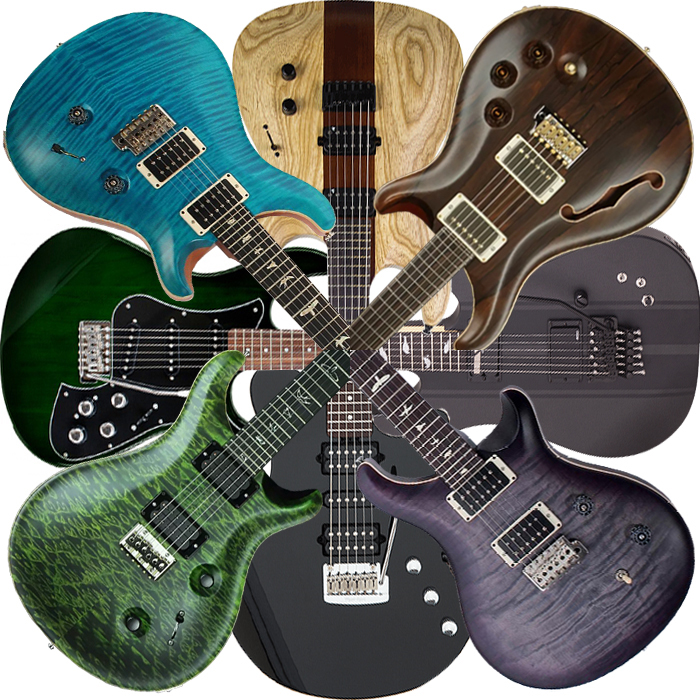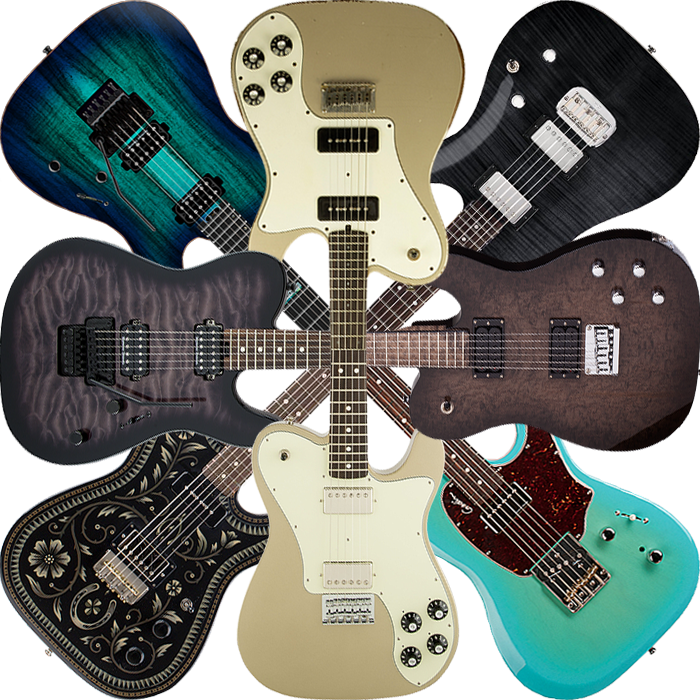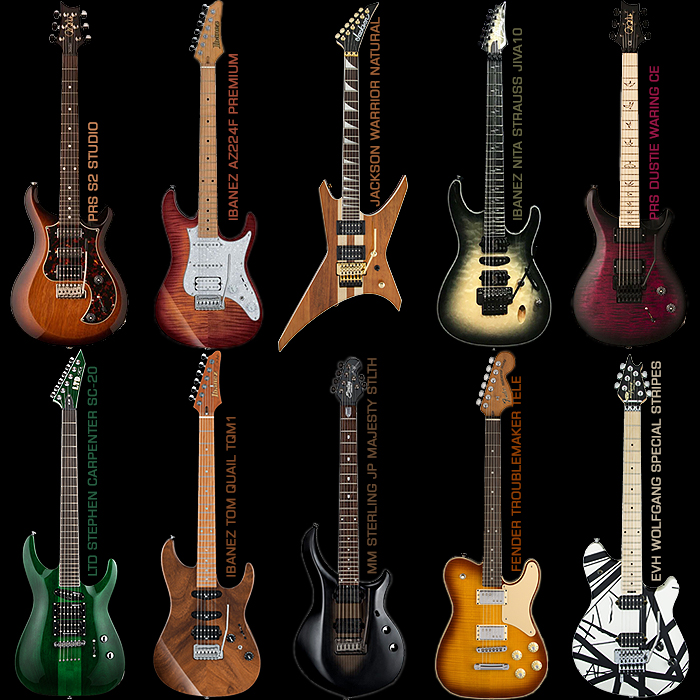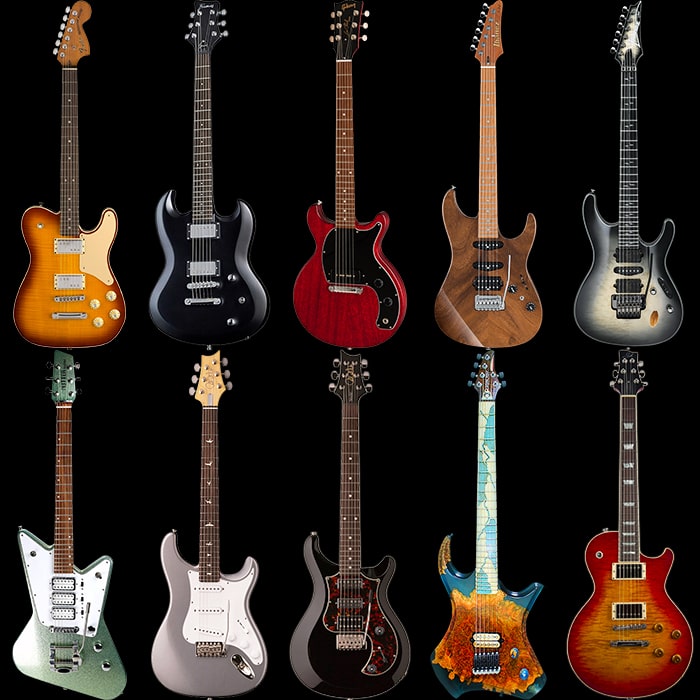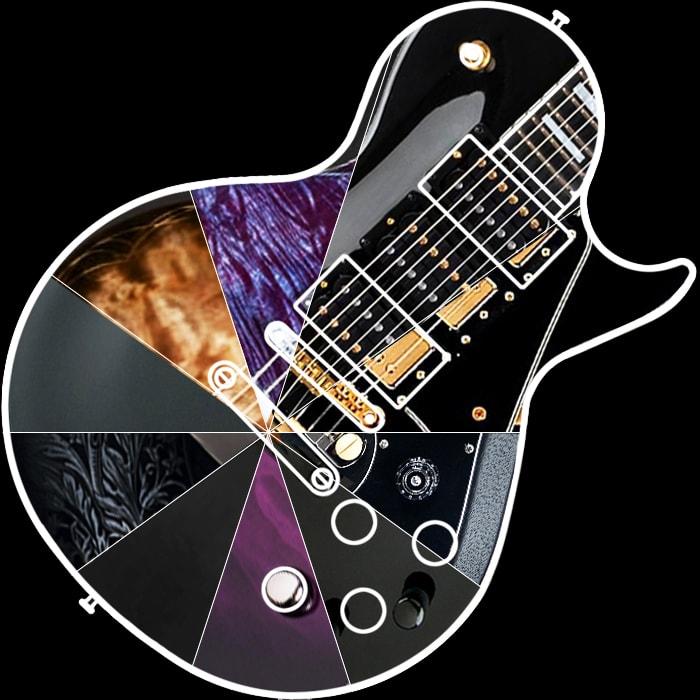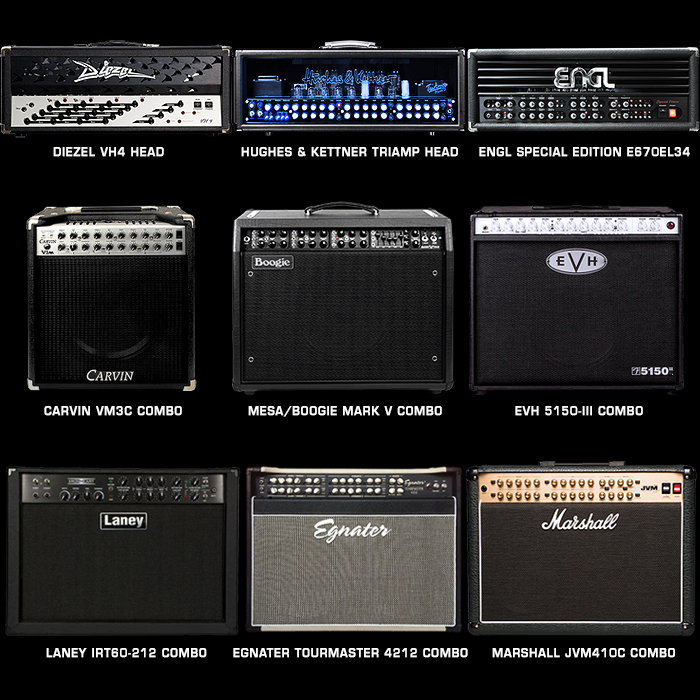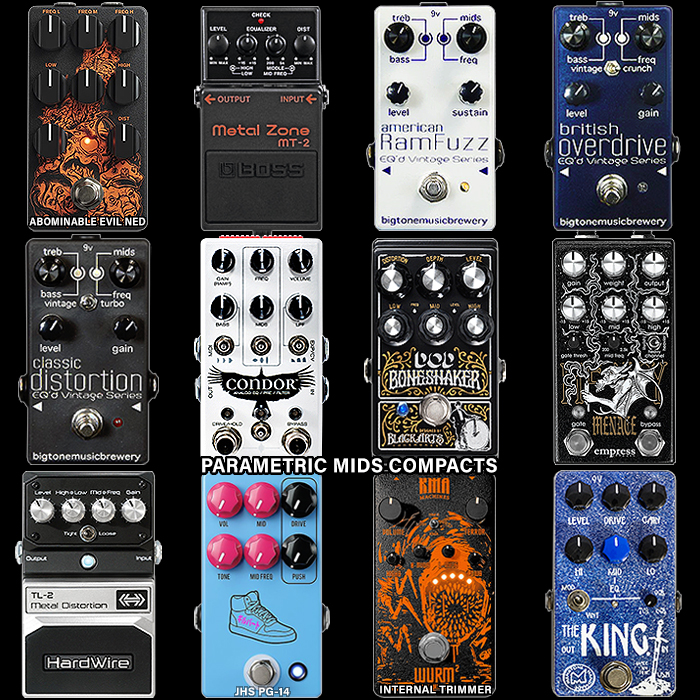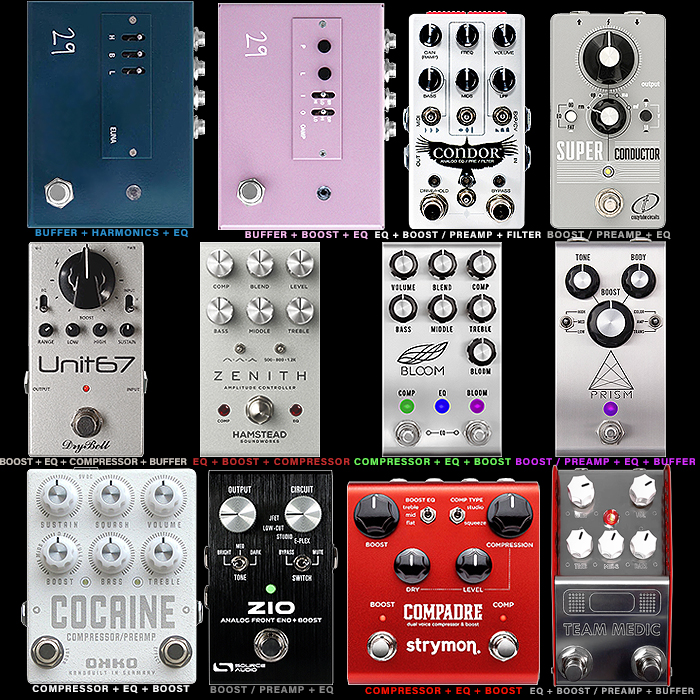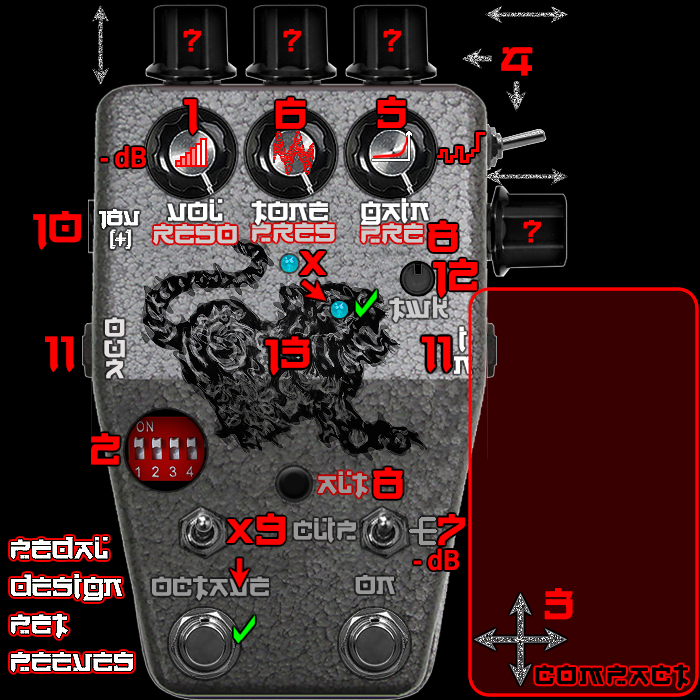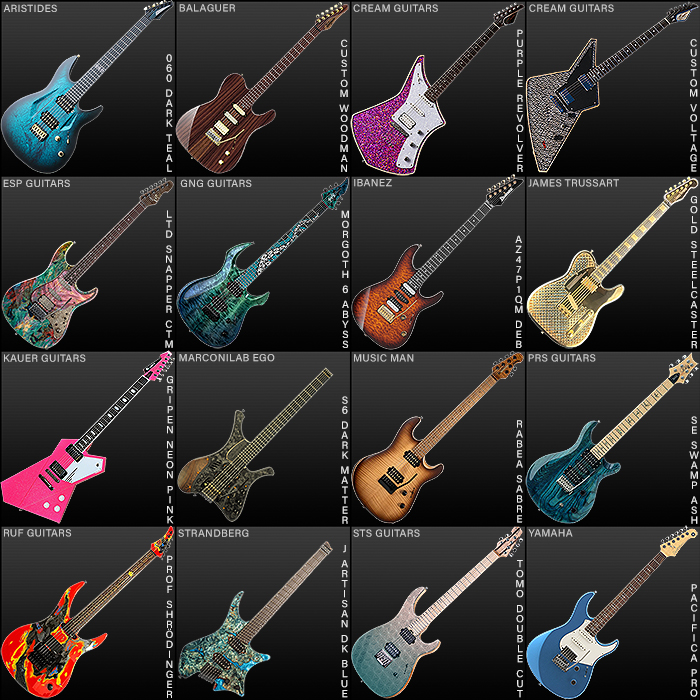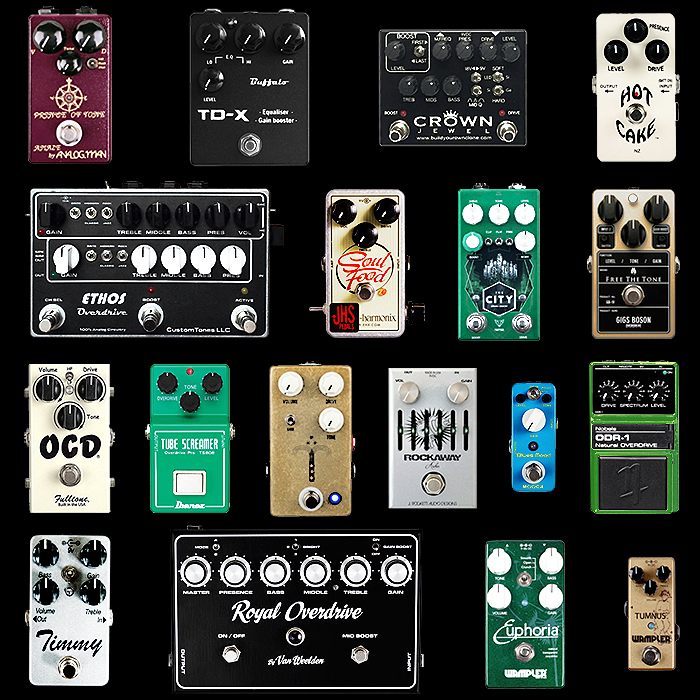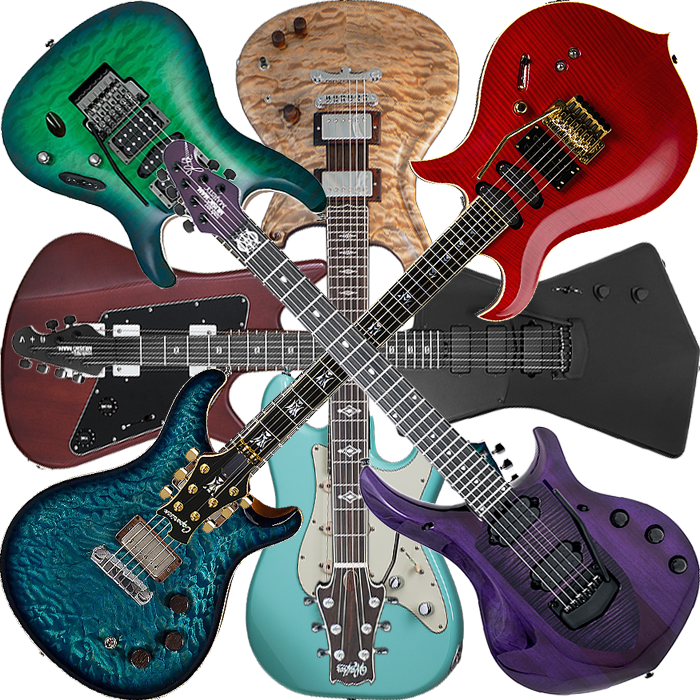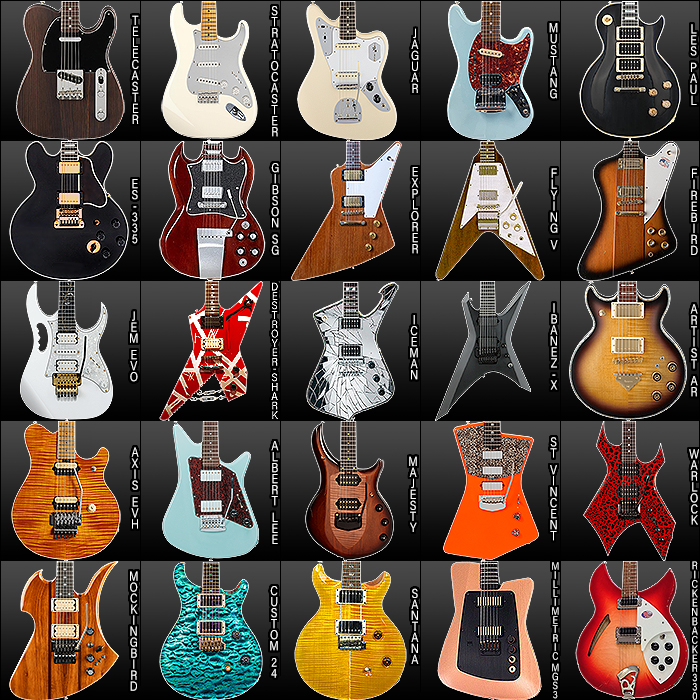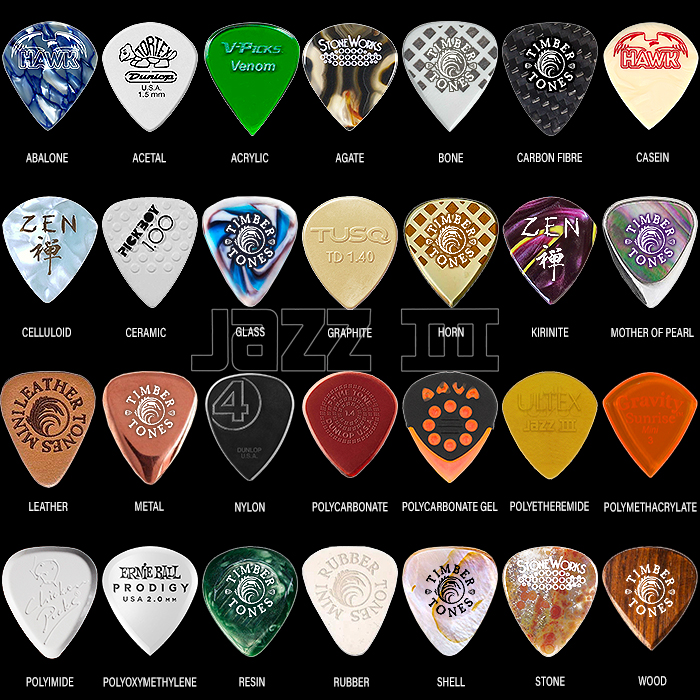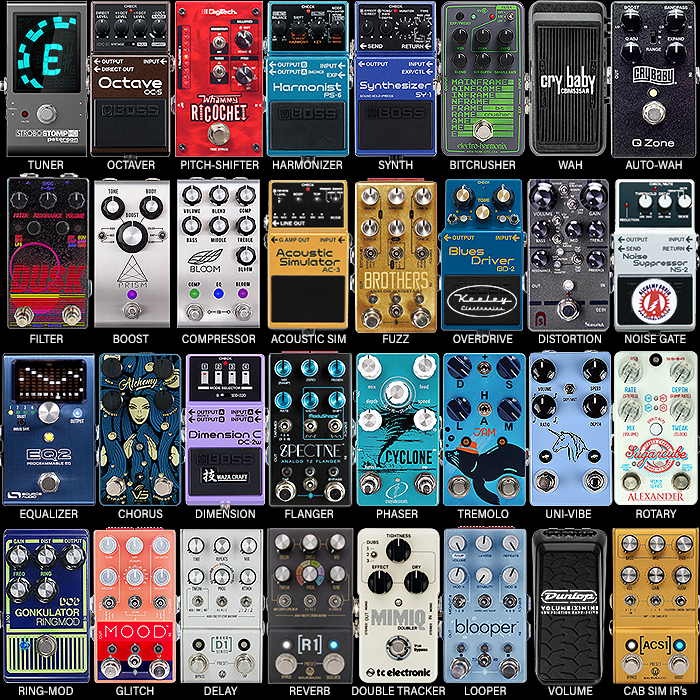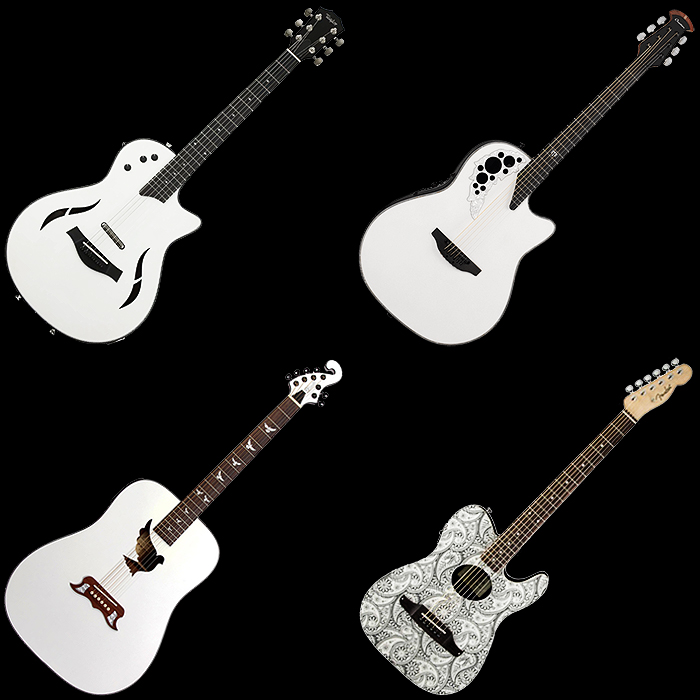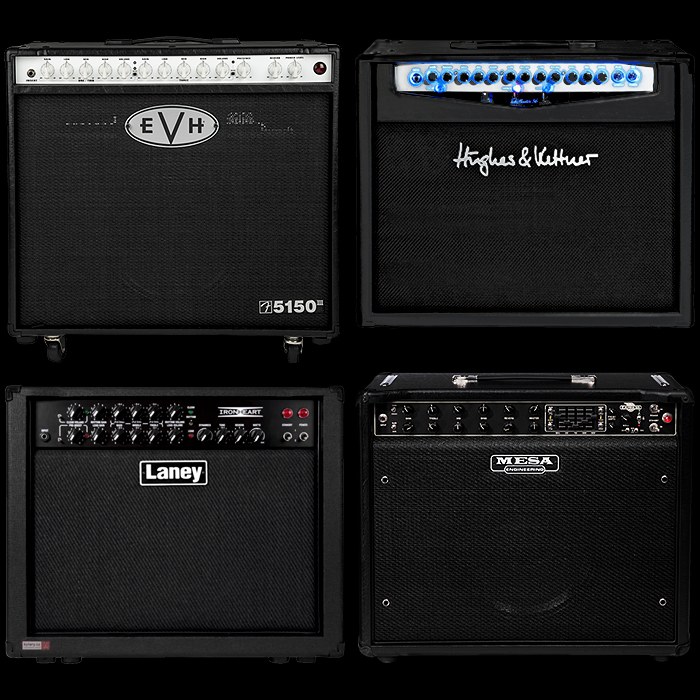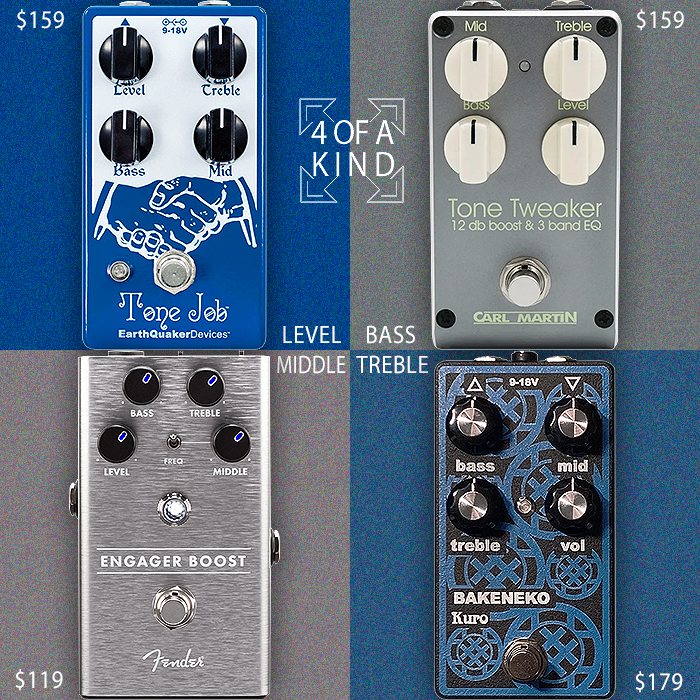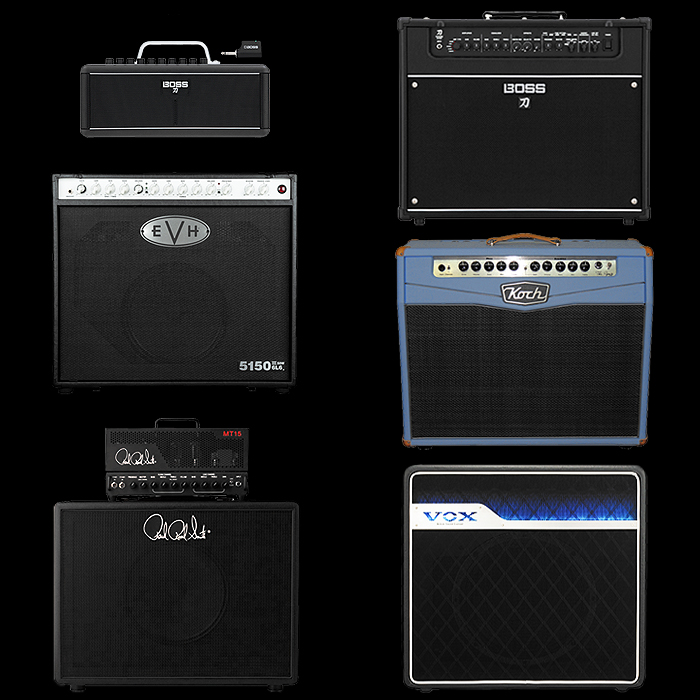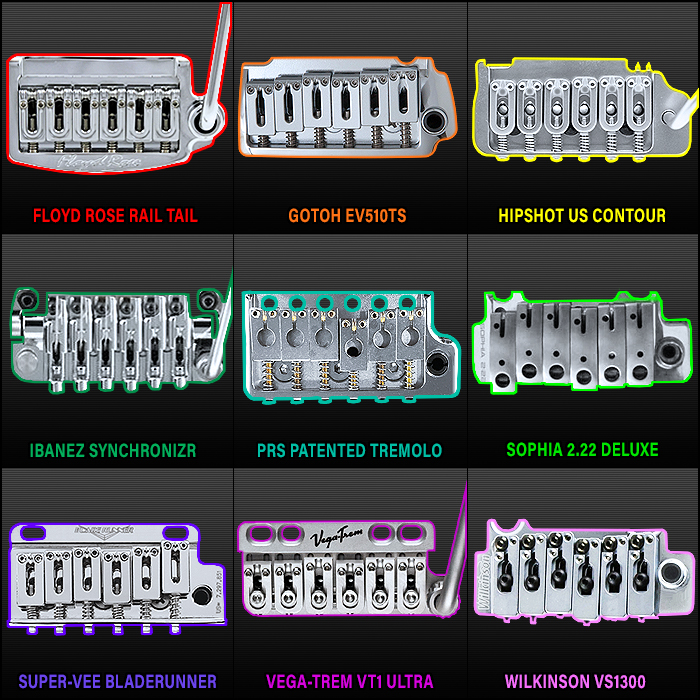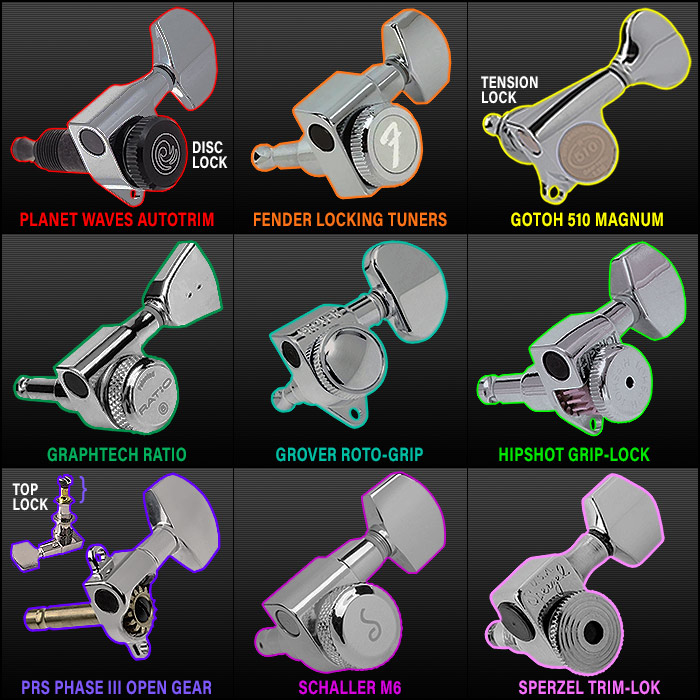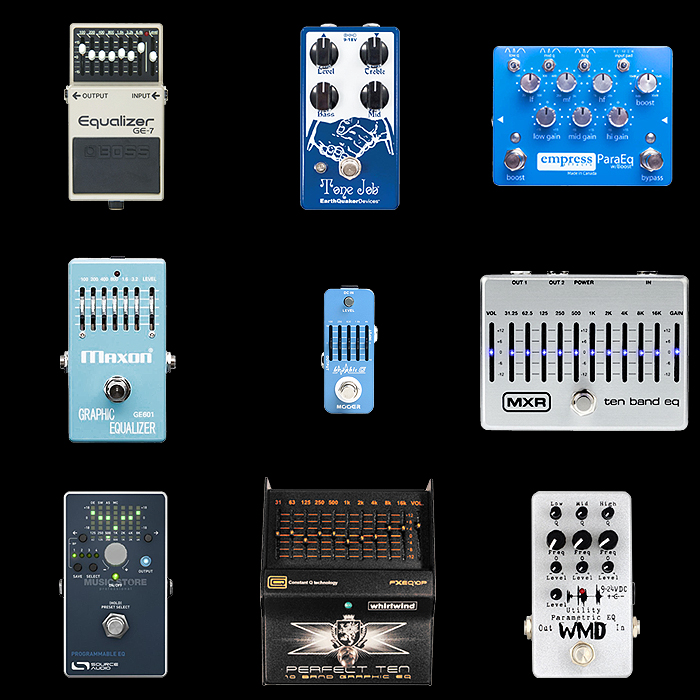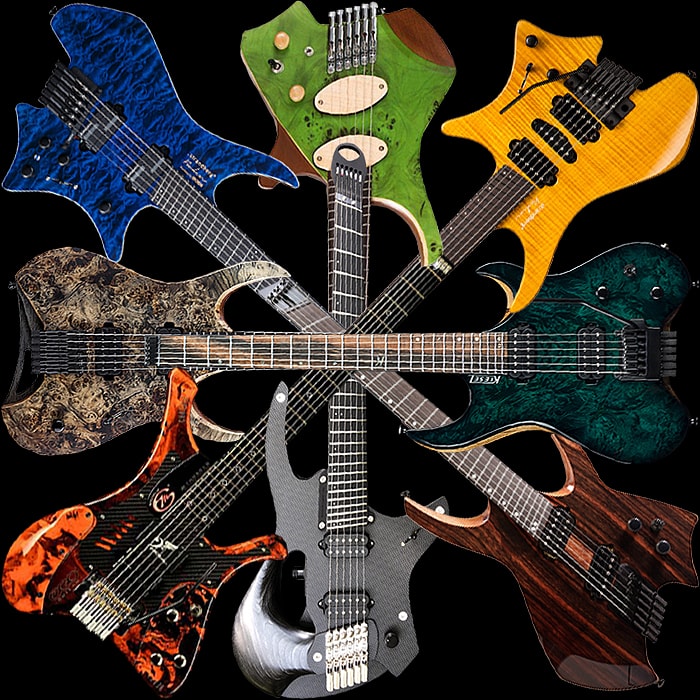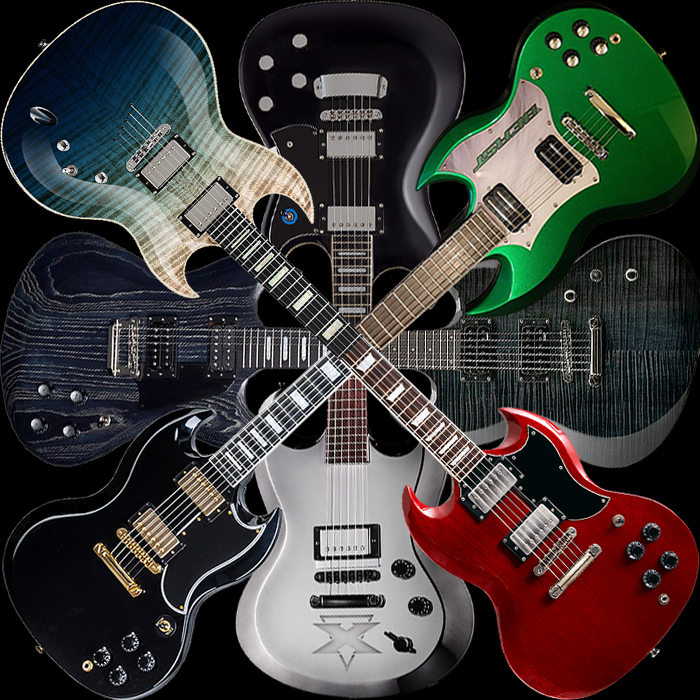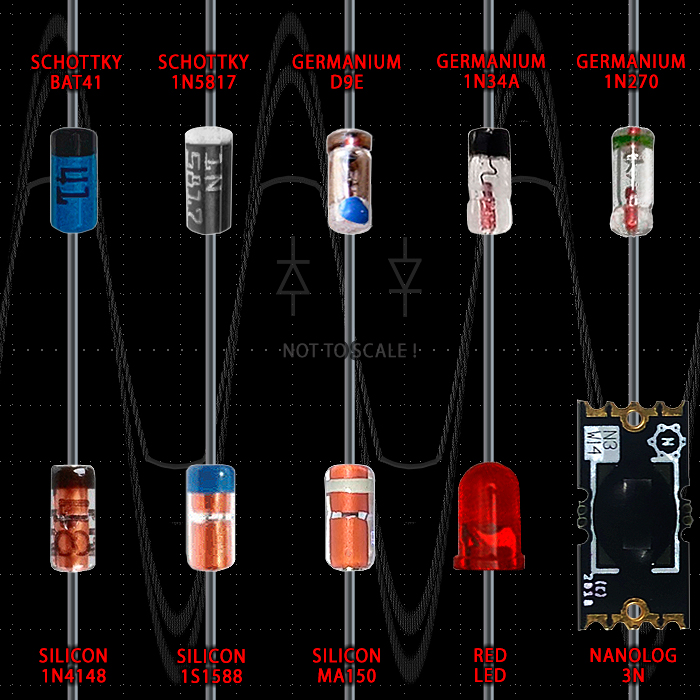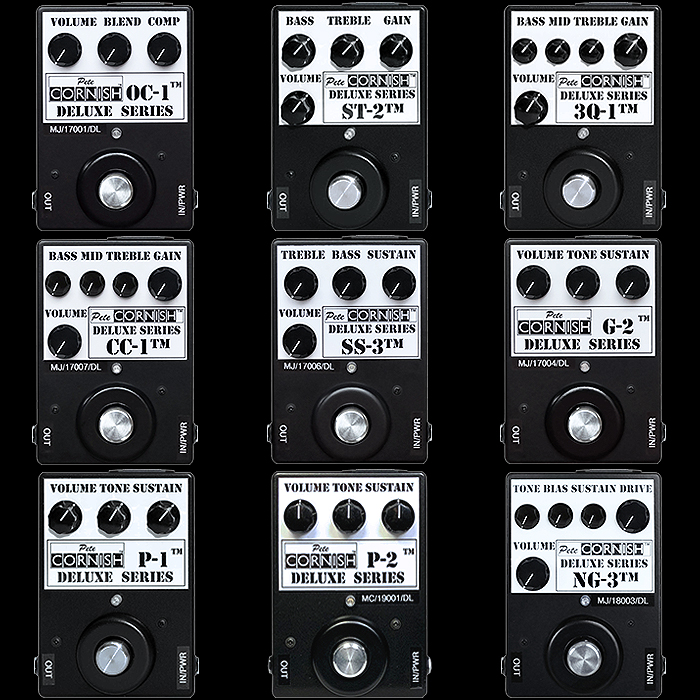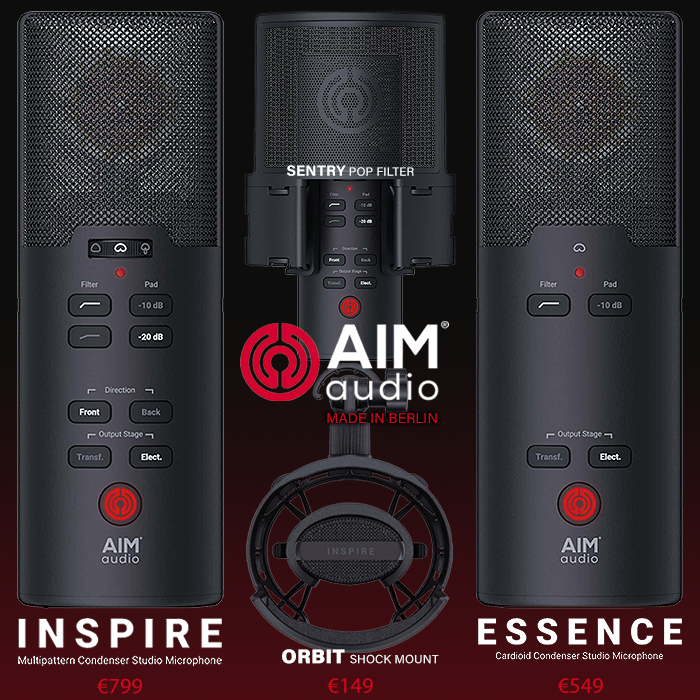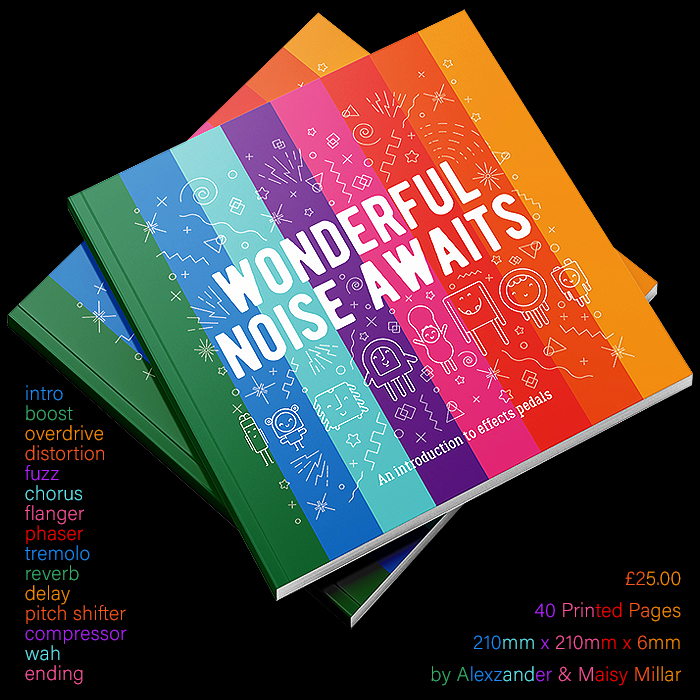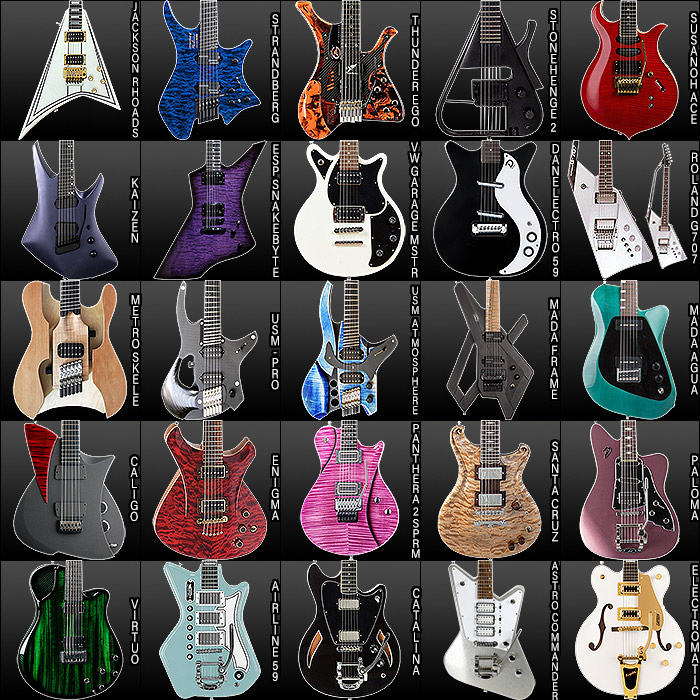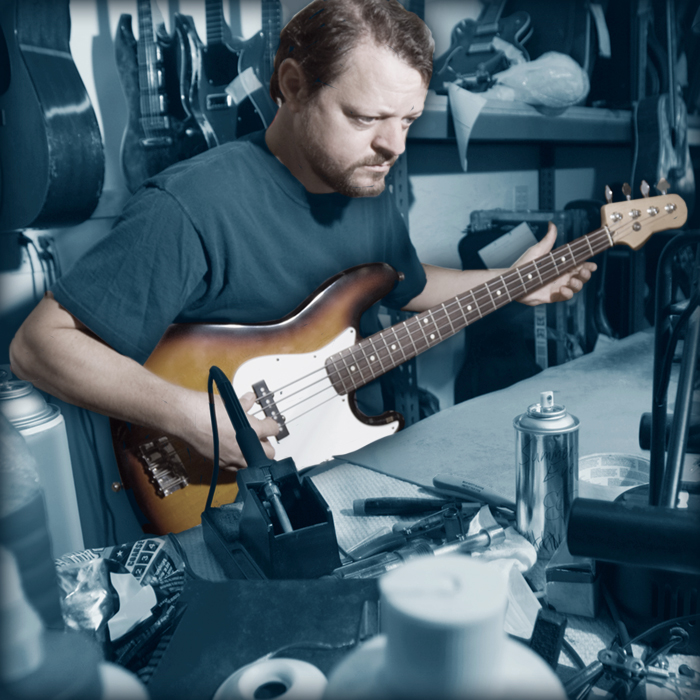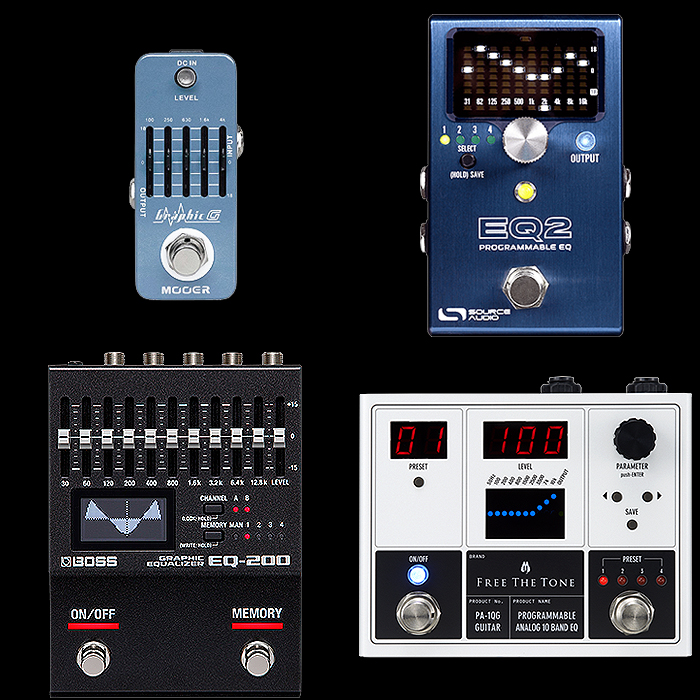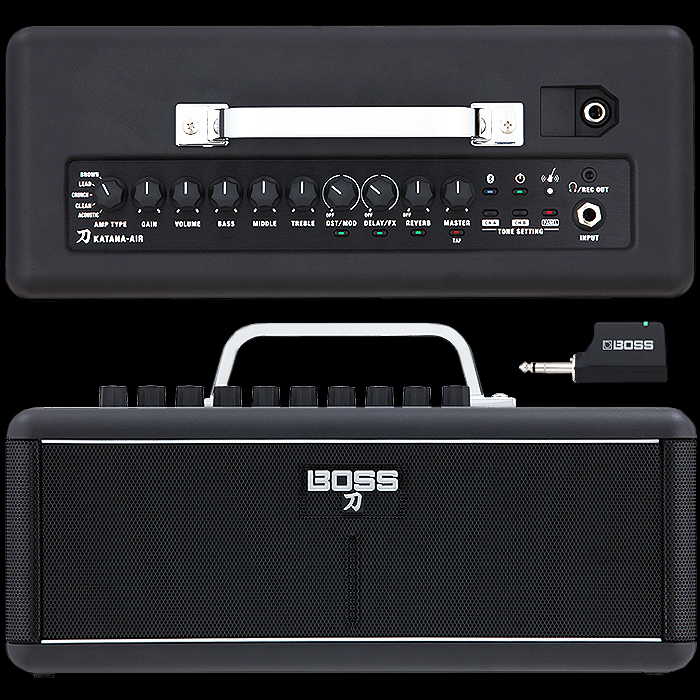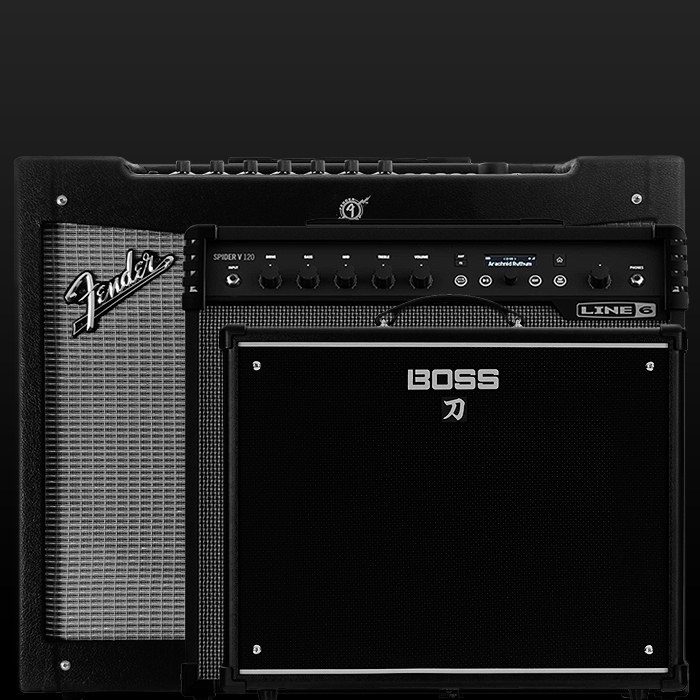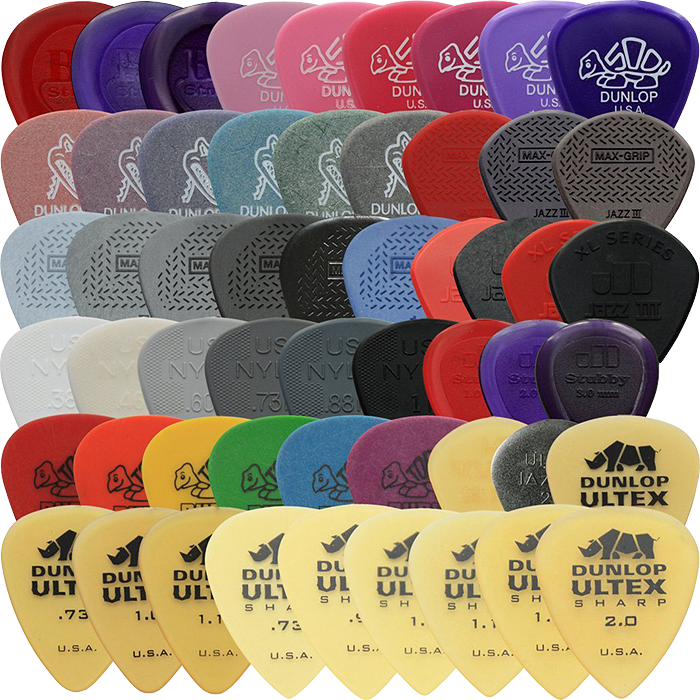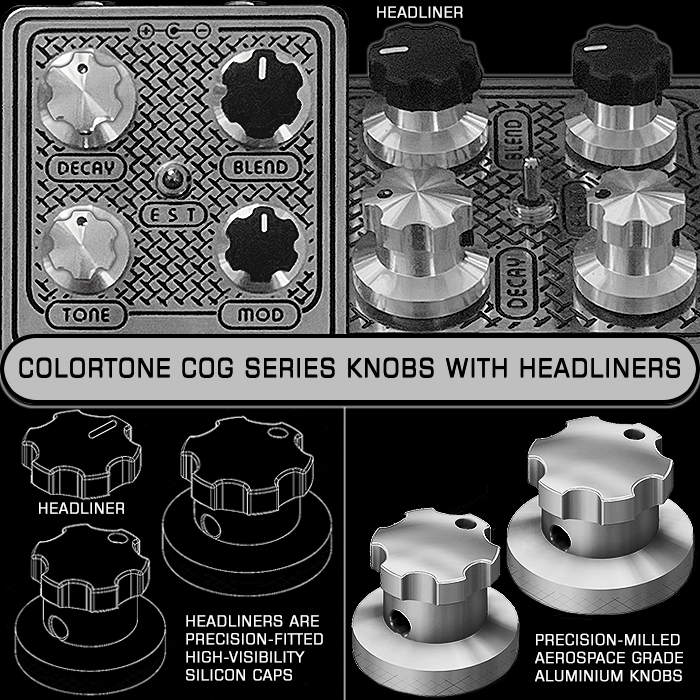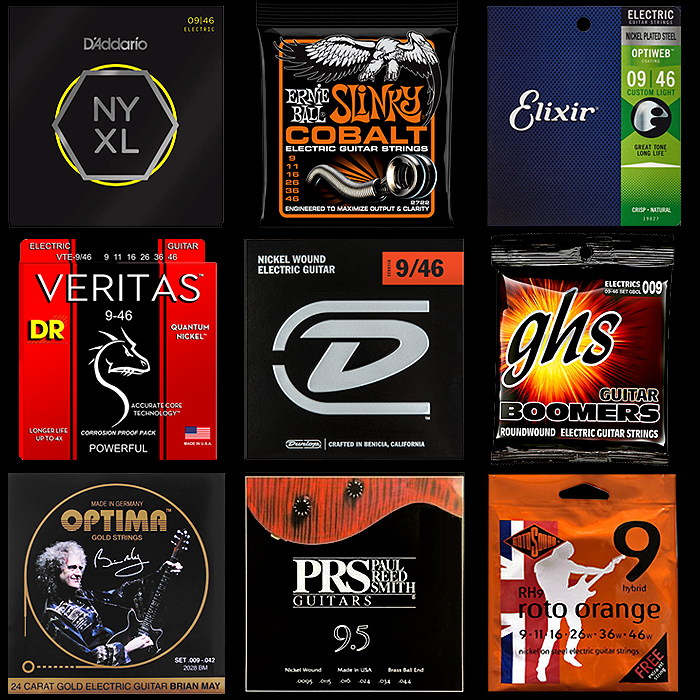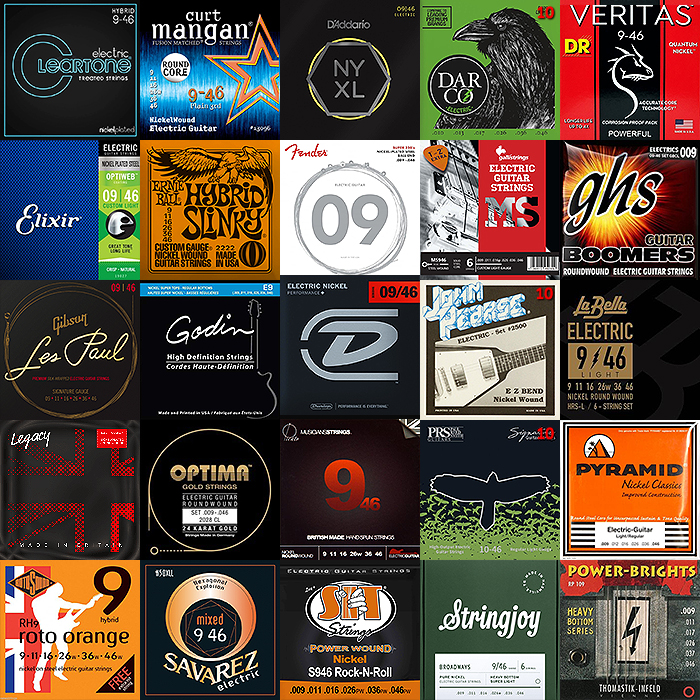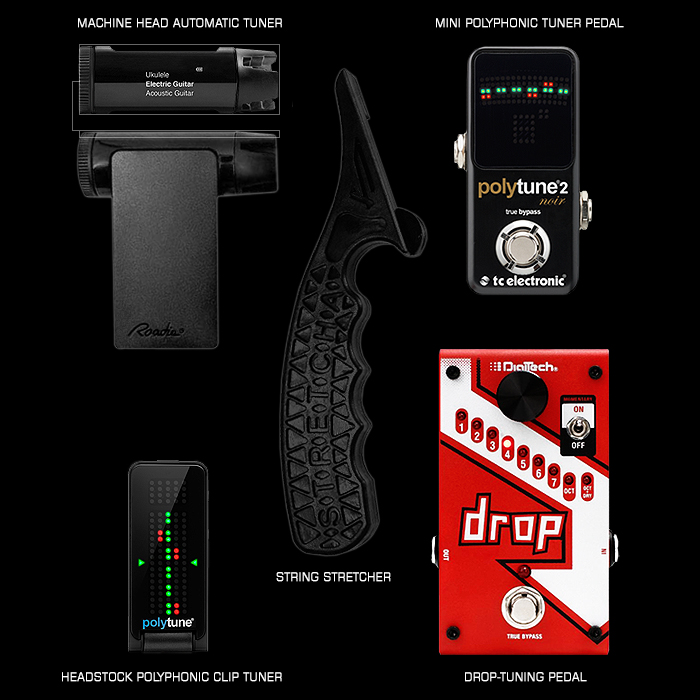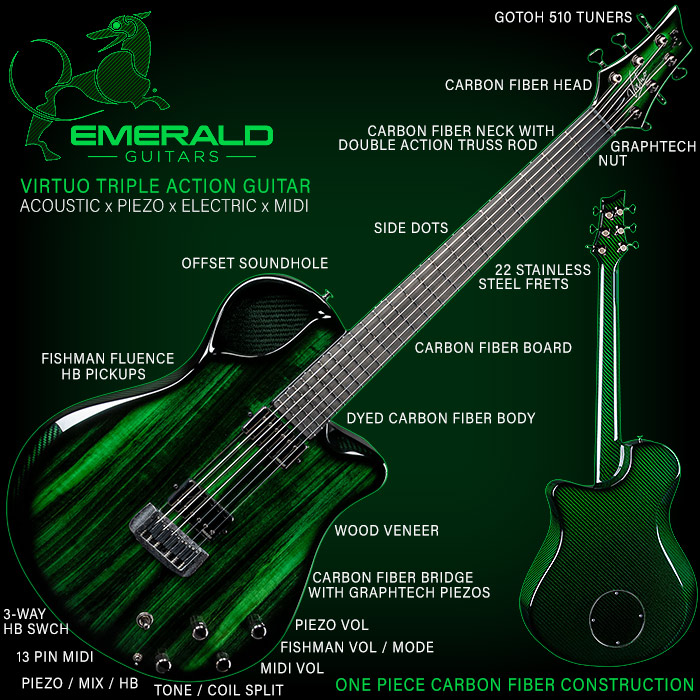Electric Guitar EQ
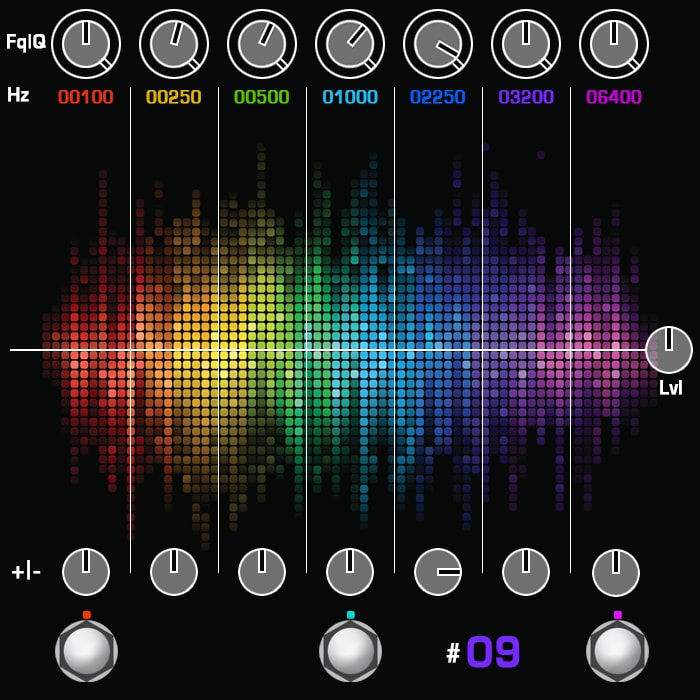
So this started off as an addendum to my piece on Guitar Pedal Tone Control Alternatives, but then very much became an article in its own right, and now precedes the article it was supposed to be a part of. The majority of guitar pedals usually have one or more tone control dials or switches to amend / tune the tone of said pedal. I started looking at different forms of tone control, before investigating what in fact were the key frequencies for electric guitar, and how was it best to control those.
I sort of have a preference for pedals with a classic 3-Band EQ - i.e. Bass | Mids | Treble, and ideally of the ’active’ sort where you can boost as well as cut those key frequencies. With your classic ’Marshall’ Tone Stack you have 3 dials with fixed centre frequencies and typically fairly broad bandwidth / Q / Frequency Range. As follows I touch on some key frequency clusters for electric guitars, and the different sorts of EQs / EQ pedals available currently.
The visual above is entirely of my own invention, and is supposed to represent a fully parametric 7-band EQ with Spectrum Analyzer display for increased visualisation and clarity. At the top you have 7 dual-concentric pots which allow you to change / shift the Centre Frequency value and adjust the Q | Bandwidth around the selected Hz value. I’ve pretty much copied the key values from my current favourite EQ - the Boss GE-7. In my visual the boost/cut dials sit below the Spectrum Analyzer, with a Level dial to the right, and 3 footswitches a la Boss / Eventide / Strymon. The 3 footswitches are supposed to represent preset selection, but I’ve not really gone into too much detail about exactly how everything works and needs to be engineered. The key parts are the bright colourful display, the parametric abilities and the presets! The technology surely exists already in component parts, it’s just a question of who could put such a device into production? In any case the purpose of the visual is to sort of highlight the key points of this article.
Note also that within a band context this gets ever more complicated as each musician and vocalist operates within set ranges within compositional context many parts of which overlap - so that for ultimate clarity and fidelity to be maintained at all times, significant coordination is necessary.
If you’re in a garage band scenario, all too many times the output sounds muddy and unclear because the bass and drums are overlapping frequencies, and same goes for guitars, keys and vocals. A decent sound engineer with a full mixing desk can merge, filter and cut frequencies to make even the most ramshackle of bands sound decent. So there are two key considerations for ’EQ’ - how good you and your instrument sound, and how great that sounds in turn within the mix of all the musicians within the band / composition / arrangement.
I won’t go into too much detail on the latter, I am more concerned with tuning and honing my own core sound - and would leave it to the sound engineers and mastering engineers to sort out the wider overlap and mix challenges.
Key Guitar Frequencies
Note that the below values are approximate, and depend to a degree on what equipment you are playing through, as certain pedals and effects / circuits will by default accentuate certain frequencies and boost the frequency range enormously from the clean electric guitar signal / pallet.
Key Audible Electric Guitar Range = c80 Hz - c7,000 Hz
(These are the frequencies most people can hear, most everything else is texture and atmosphere.)
- 20 - 80 Hz : Deep Bass, can add muffle and muddiness, can also thicken sound to a degree. 20 Hz usually lower kick-drum frequency, low-end bass is around 60 - 100 hz. For electric guitar you would typically cut anything below 100Hz
- 80 - 120 Hz : typical low-end guitar frequencies - cut below 100hz to give space to low-end bass and percussion
- 100 - 300 Hz : used to add fullness of sound / thickness & body to guitar, just a little though as too much here muffles and can create flubbiness / warble
- 300 - 1,000 Hz : Liveliness / attack - adds some electrical sizzle
- 1,000 - 2,000 Hz : ’Honk’ / nasally guitar sounds - boost or cut
- 2,000 - 2,500 Hz : classic mid hump or scoop
- 2,500 - 3,000 Hz : boosting here gives you more snap / pick attack
- 3,000 - 7,000 Hz : Brilliance and Presence / Sparkle
- 7,000 - 11,000 Hz : Treble boost to accentuate distortion
- 10,000 - 20,000 Hz : sort of very high end textural fizz or ’Air’ - pretty much inaudible to most
Open / Clean Electric Guitar String Hz - Low to High
Here we have the Hz values each open string will produce when plucked - with a clearn signal:
- E2 : 82.41 Hz
- A2 : 110.00 Hz
- D3 : 146.83 Hz
- G3 : 196.00 Hz
- B3 : 246.94 Hz
- E4 : 329.63 Hz
Basic EQ
The most basic EQ you will find on a pedal is a single Tone control, which is usually a sort of High Pass Filter which cuts frequencies above a certain range, by use of electronic limiters such as resistors. These singular tone controls are classic shelf type EQs where their maximum values are achieved when filter is not applied / off. This means that a single tone dial of this nature will typically be set at circa 50% in the middle / centre position - fully off when fully clockwise, and fully on (max limiting) when fully counter-clockwise.
2-Band EQs tend to work in a similar fashion - just with Low Pass as well as High Pass Filters - targeting lower frequencies in a similar way.
Centre Frequency and Bandwidth
The most basic tone controls will tend to be of the shelf-type variety or limiting filters as discussed. Each will have a range or bandwidth / frequency cluster they target. As such we can assign a ’Centre Frequency’ value to where the filter is most active, and the surrounding frequency bands are defined as bandwidth - meaning that a low frequency filter with a centre frequency of 100 Hz will take out a certain amount of frequencies either side of that say +/- 5 or 10, meaning that you target 100% of 100Hz frequencies, and then a lesser amount of 95 Hz and 105 Hz etc. in descending level of impact. Most Parametric EQs allow you to select the ’Q’ or bandwitch range - eithe via dial, or by way of 3-way mini toggles. Essentially the fewer the tone controls, typically the larger the bandwidth applied by default.
Typical Three Band Shelf EQ - Centre Frequencies
As we’ve mentioned before, the key frequencies for guitar span from 100Hz to circa 7,000Hz - so splitting those into 3 key centre frequencies would mean the peaks at either end for Low and High, with the key 2,000 to 2,500 for mid-hump / scoop as the most likely optimal middle value.
- Bass : 100 Hz
- Mids : 2,000/2,500 Hz
- Treb : 6,000/7,000 Hz
Empress Three Band Parametric EQ (+Q-Width/Range)
Parametric EQs tend to have overlapping frequency ranges to help you target your exact required tone - obviously the fewer the controls, the greater the degree of overlap. For Empress’s Parametric EQ, there is a huge range covered from 35 to 20,000 Hz. Empress employs 3-way mini toggles for adjusting the bandwith range / Q values for each of its 3 key controls.
- Low : 35 Hz - 500 Hz
- Mid : 250 Hz - 5,000 Hz
- High : 1,000 Hz - 20,000 Hz
Wampler EQuator Four Band EQ (Parametric Mids)
Wampler’s new EQuator pedal is fully active with cut and boost at all levels, but only parametric on the two Mid-range controls. In some ways it gives better coverage to the core Middle-band frequencies, but it lacks the Q controls of Empress’s pedal as well as the centre-frequency shift for the highs and lows. It’s a more compact and easier to use pedal, but not quite as powerful.
- Bass : 130 Hz
- Mids 1 : 238 - 5,000 Hz
- Mids 2 : 480 - 4,800 Hz
- Treble : 7,000 Hz
- (Mid-scoop = c2,200 Hz)
MESA/Boogie Five Band EQ
The Mesa 5-Band EQ you see on many of its amps and pedals has the great benefit of being square on the 2,200 Hz value for one of its mid centre frequencies. The frequency clusters here have been very carefully chosen.
- 90 Hz
- 240 Hz
- 750 Hz
- 2,200 Hz
- 6,600 Hz
MXR M109 Six Band EQ
I really just included this for sake of completion really - the MXR 6-Band EQ just lops of the top frequency of the Boss equivalent:
- 100 Hz
- 200 Hz
- 400 Hz
- 800 Hz
- 1,600 Hz
- 3,200 Hz
Boss GE-7 Seven Band EQ
This is my current EQ pedal of choice - in its Alchemy Audio version - and 7 Bands is about right for me, whereby overall I am really happy with how this pedal works. Its key downside as such is that it does not have a frequency band exactly within the key 2,000 to 2,500 Hz register which is deemed optimal for mid-hump and scooped tones!
- 100 Hz
- 200 Hz
- 400 Hz
- 800 Hz
- 1,600 Hz
- 3,200 Hz
- 6,400 Hz
Source Audio Eight Band Programmable EQ
I’ve long considered this 4-preset enabled 8-Band EQ as a replacement for my Boss GE-7, its great advantage is in the presets. While I find its overall operation a touch fiddly and the screen a litte small. Unlike the GE-7 you cannot effect instantaneous changes - having to scroll through line by line or column by column as such and change individually - while on the GE-7 you can move multiple sliders instantly and simultaneously!
- 62 Hz (optional)
- 125 Hz
- 250 Hz
- 500 Hz
- 1,000 Hz
- 2,000 Hz
- 4,000 Hz
- 8,000 Hz
MXR M108 Ten Band EQ
I’ve tried 10-Band EQs and I find them a little over-fiddly really. I think 5-7 is about as much as I would like to play with, particularly on the basis of Parametric EQ. The two lower frequency bands and the highest one art sort of surplus to requirements for most electric guitar players as far as I am concerned.
- 31.25 Hz
- 62.5 Hz
- 125 Hz
- 250 Hz
- 500 Hz
- 1,000 Hz
- 2,000 Hz
- 4,000 Hz
- 8,000 Hz
- 16,000 Hz
Final Thoughts
So I am broadly satisfied with my Boss GE-7 - it is visually very clear, and ever so quick and easy to apply / deploy. Its key issue would seem to be in its choice of frequency bands to a degree, and its inability to store presets. Which is how I came about doing the above visual - where I was kind of looking for a better way for Parametric EQs to be displayed - as a series of concentric dials does not immediately visually communicate what the settings are.
I’ve also toyed with the Source Audio Programmable EQ which is clever to a degree, but far too fiddly and clunky overall for me. By this I mean that you can manipulate 8 different frequency bands, but can only edit one at a time through sequential stepped navigation. And even though you can control 8 bands, only 7 of those are visible on the screen. The actual bar display is tiny, as are many of the controls.
The above prototype visualisation looks to tackle the key challenges and give you the best of all worlds - a highly visual graphic EQ / Spectrum Analyzer that is programmable and has presets, as well as the most powerful degree of parametric control!
In my visual I have laid out the default values as being the same as the Boss GE-7, but have then shifted the Centre Frequency values closer to those that appeal to me - i.e. 100 | 250 | 500 | 1000 | 2250 | 3200 | 6400. With Parametric control and presets - the idea here is that you have 100 presets to play with from 00 to 99 - with all manner of defaults pre-loaded with different Centre-Frequencies and Tone-Curves.







